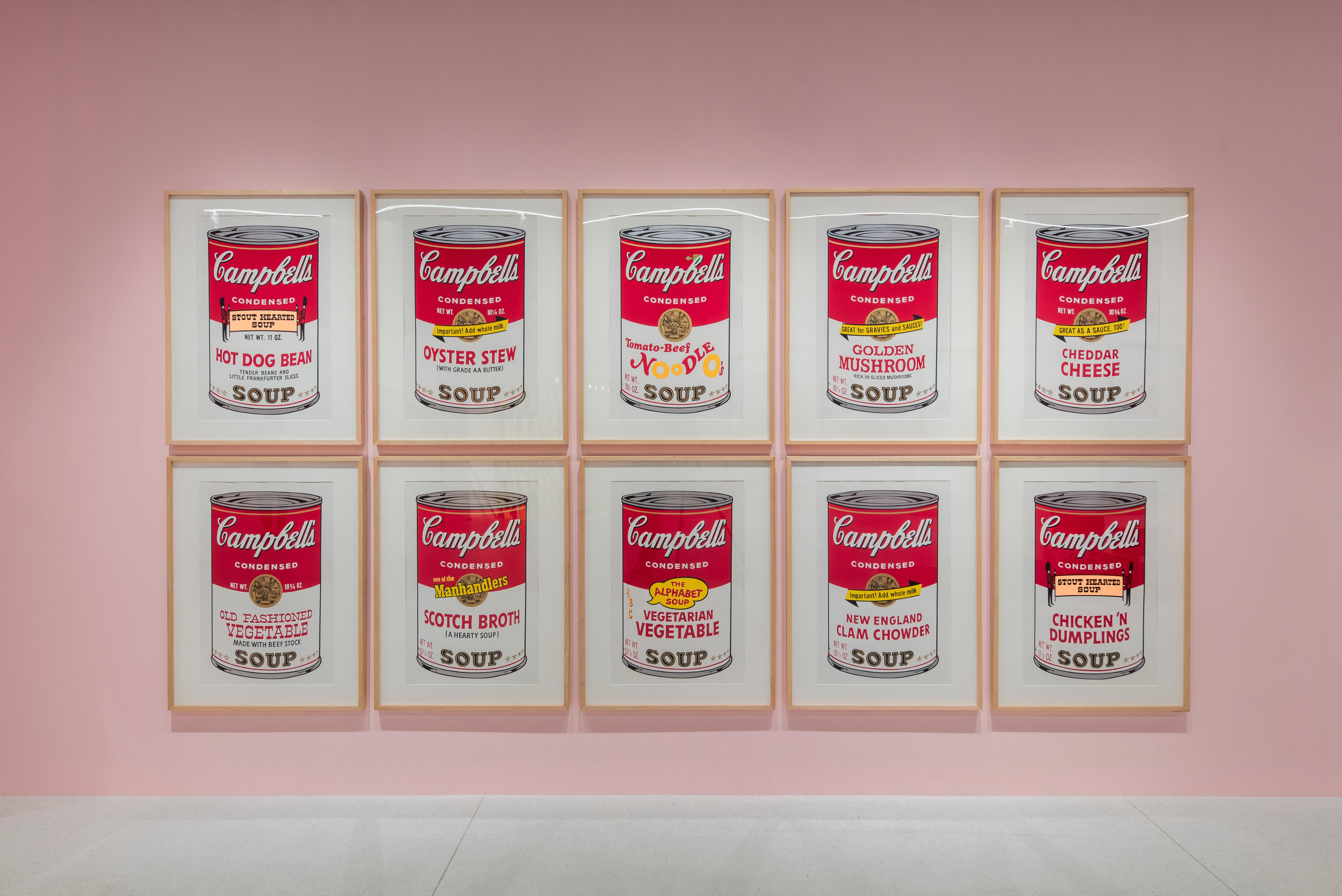
Andy Warhol visited Beijing in 1982, posing on the Great Wall and at Tiananmen Square. Informed that China didn’t have any McDonald’s, he famously replied, “Oh, but they will.” Fast-forward to the 21st century: China is McDonald’s second biggest market—and Warhol’s fame is hitting new heights.
This status is reflected in the reception of “Becoming Andy Warhol,” the recent Warhol exhibition that traveled to UCCA Edge in Shanghai in November (it’s there through March 6, 2022) after wrapping its run at UCCA Beijing in the previous month. The Beijing show welcomed more than of 170,000 visitors.
Billed as the “first comprehensive exhibition of Andy Warhol staged to date in China,” the exhibition showcases 400 artworks and artifacts, and is a collaboration between the UCCA and the Andy Warhol Museum in Pittsburgh. Some of the exhibits in the show are shown outside of Pittsburgh for the first time, with a special focus on the pop art icon as a photographer and a filmmaker.
An installation view of ‘Becoming Andy Warhol’ at UCCA Edge, Shanghai. Courtesy of UCCA Center for Contemporary Art.
The Shanghai show is essentially unchanged from Beijing, divided into five thematic chapters: “Origins,” “Warhol the Photographer,” “Cinema as Object,” “Warhol Remixed,” and “The Immaterial.” José Carlos Diaz, chief curator of the Andy Warhol Museum and co-curator of “Becoming Andy Warhol,” explains that main difference between the Shanghai and the Beijing show lies in the configuration. “This version of ‘Becoming Andy Warhol’ is a multi-floor experience,” he notes.
There are plenty of well-loved Warhol pieces to see, from silkscreen paintings such as Flowers (1964), to Warhol’s Campbell’s Soup, Brillo pad, and Coco-Cola icons, to his famed prints of Marilyn Monroe.
The presentation also includes 24 newly remastered moving-image works, the Screen Tests and Empire (1964) among them. The abstract and conceptual works created towards the end of his life, such as those from his series “Camouflage” (1986) and “Rorschach” (1984), are also on view.
One notable absence seems to be Warhol’s iconic portraits of Mao Zedong, the late founding father of the People’s Republic of China, which were nowhere to be seen at the Shanghai show, according to exhibition-goers. UCCA confirmed that portraits of Mao are not exhibited at the show.
An installation view of ‘Becoming Andy Warhol’ at UCCA Edge, Shanghai. Courtesy of UCCA Center for Contemporary Art.
This is not the first time a major Warhol exhibition has had to navigate such issues in China. In 2013, the traveling exhibition “Andy Warhol: 15 Minutes Eternal,” also organized by the Andy Warhol Museum, was the first large-scale Warhol show to set foot on the mainland when it toured Shanghai and Beijing—also minus the Mao portraits that were shown in Hong Kong and other cities during the Asia leg of the show as they were deemed “too political” and disrespectful at the time. Perhaps they still are.
Regardless, Warhol remains an important reference in China. Since the 2013 exhibition, shows of various sizes have popped up here and here. Just this past year, in January, Shanghai Minsheng Art Museum offered “The Pop Image: Andy Warhol’s 1962-1987.”
Social media posts containing the hashtag “Andy Warhol” (in Chinese) on Weibo, China’s equivalent to Twitter, have been read by more than 10 million times. A 2017 thread on Chinese website Zhihu on how to appreciate Warhol’s work had nearly 300,000 views.
An installation view of ‘Becoming Andy Warhol’ at UCCA Edge, Shanghai. Courtesy of UCCA Center for Contemporary Art.
Another possible reason for Warhol’s recent viral stardom may be the widespread use of Douyin—the original version of TikTok in China—which has been a successful path to promoting art in China. UCCA harnessed the power of this immensely popular short-form video app in promoting Warhol, when, in September, five live sessions were conducted at UCCA Beijing, featuring five different speakers including Dai Jinhua, a cultural critic and professor at Peking University. These garnered more than 600,000 views.
During the Shanghai show’s livesteamed opening press conference, Patrick Moore, director of the Andy Warhol Museum and co-curator of “Becoming Andy Warhol,” reflected on the Pop artist’s popularity both inside and outside of China—particularly with a digital natives.
“We are very amazed by our young audience,” Moore said. “Warhol…focused on every possible means of communication. This polymath approach to art is very much how young people are today. They don’t want to be put into a box. They are really open to many different possibilities… We live in such a media-driven world and that’s why Warhol feels so right.”
The article was updated on December 3. UCCA confirmed that Warhol’s portraits of Mao are not exhibited this time.